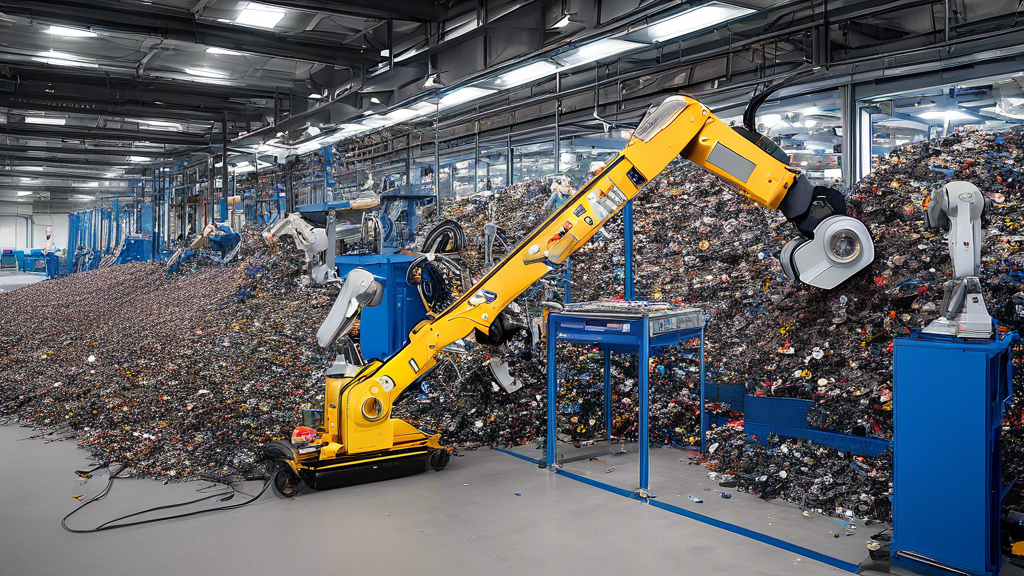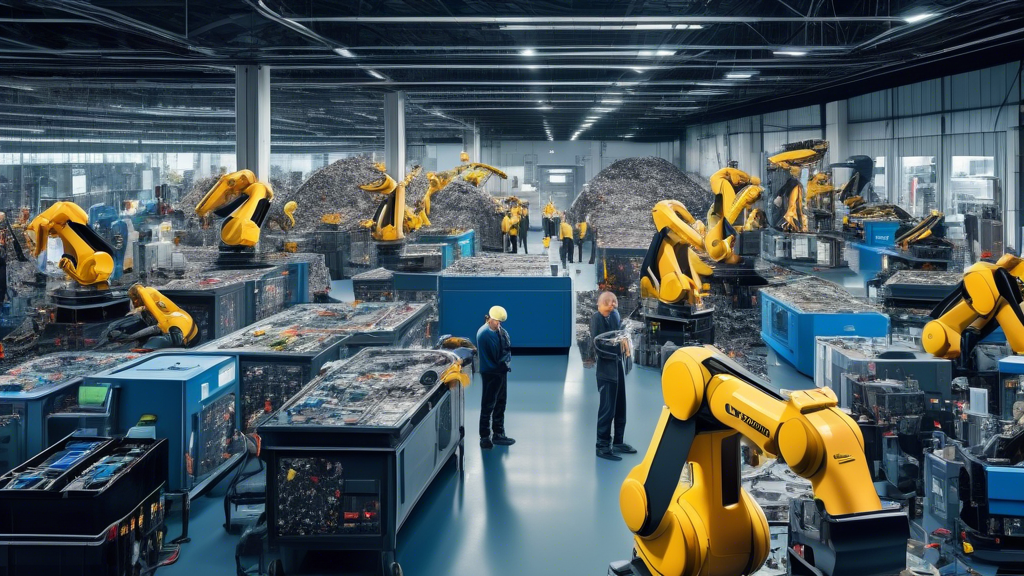Is your old battery actually a hidden treasure waiting to be tapped? As electric vehicles (EVs) zoom into the mainstream, the buzz around Battery 2nd Life and recycling has reached a fever pitch. These concepts aren’t just trendy—they’re essential for sustainability. But what do they mean, exactly, and how do they make Mother Earth smile?
Battery 2nd Life is a second chance for used batteries, repurposing them beyond their automotive origins. Meanwhile, battery recycling reclaims raw materials, reducing environmental impact while conserving precious resources. Think of it as the ultimate green makeover!
Innovations in this field are happening at lightning speed. Industry is keenly focused on breakthroughs that make the recycling process more effective and cost-efficient. Today’s batteries, once bound for landfills, are now finding clever new purposes and second lives. Are they being transformed into energy storage solutions that help power our homes?
Trendy tech and savvy sustainability are forming a dynamic duo to tackle the challenges of battery reuse. These efforts don’t just lower waste; they create economic opportunities and boost environmental well-being. With governments promoting policies to aid this transition, second life is becoming nothing short of a revolution.
So, what’s on the horizon for these powerhouse convos? As we rummage in the recesses of our technology, the promising prospects of Battery 2nd Life and recycling take form. Let’s see how these innovations will shape a smarter, greener tomorrow, sparking not just our cars, but an era of sustainable solutions. Ready to join the charge?
Growing Importance of Battery 2nd Life and Recycling
Are we ready for a greener world? With the spotlight on sustainability and rising electric vehicle (EV) adoption, battery second life and recycling have never been more important. As concerns about environmental impact intensify, finding ways to reuse and recycle batteries effectively becomes crucial. These efforts play a significant role in reducing waste and conserving precious resources.
Key Terms: Battery 2nd Life and Battery Recycling
What do we really mean by Battery 2nd Life and Battery Recycling? Battery 2nd Life refers to the repurposing of used batteries for alternative uses once they’ve retired from primary applications, like EVs. These batteries, though no longer optimal for powering vehicles, can still serve efficiently in less demanding settings like home energy storage. Battery Recycling, on the other hand, involves dismantling batteries to salvage valuable materials such as lithium, cobalt, and nickel, preventing them from ending up in landfills.
Both processes contribute significantly to reducing environmental impact. By giving batteries a second life, we cut down on waste and extend the utility of the materials. Recycling helps recover vital components, reducing the need for new mining operations. This approach aligns with the principles of a circular economy, where resource use is optimized and waste minimized.
Trends and Technologies in Battery Reuse and Recycling
Is it all smooth sailing for these green innovations? Not quite, but we’re making strides. Current trends show accelerated development and adoption of technologies designed for efficient battery reuse and recycling. Companies and researchers are investing heavily in creating processes that ensure batteries can be safely and economically repurposed or recycled.
For instance, advancements in diagnostics technology help assess battery health more accurately, identifying viable candidates for second-life applications. Meanwhile, innovations in recycling focus on optimizing the recovery process to extract maximum value with minimal environmental impact. This includes hydrometallurgical and direct recycling methods, which offer promising solutions for improved efficiency.
The push for more robust recycling infrastructure and the development of standardized systems for battery reuse demonstrate a collective commitment to creating a sustainable future. As our reliance on batteries grows, so does the need for eco-friendly solutions that keep pace with technological advancements.

Ever wonder what happens to a battery once its time in an electric vehicle is up? Enter the concept of a battery’s second life. By repurposing these powerhouses, we unlock significant economic and environmental benefits. Batteries, even when no longer fit for the high demands of EVs, can still serve valuable roles. Picture them breathing new energy into renewable systems or backup power solutions.
The economic gains from battery 2nd life applications are substantial. Reusing batteries in energy storage systems can significantly reduce costs. For instance, they power homes with solar panels, providing off-grid energy solutions, and reducing electricity bills. This repurposing slashes the need for new battery materials and manufacturing, offering a much-needed financial reprieve amid rising resource prices.
Environmentally, second-life batteries reduce landfill dependency and resource extraction pressure. They curtail waste and contribute less to global warming emissions from production processes. With fewer batteries going directly to recycling or disposal, we lessen the burden on virgin material sourcing and lower environmental degradation.
Yet, turning a retired EV battery into a reliable power source isn’t without its challenges. The technical difficulties of assessing battery health and capacity can be complex. Degradation over time affects their performance, raising the need for precise diagnostics to determine suitable applications for each battery.
Safety is another concern. As batteries age, the potential for thermal runaway or leakage increases. Ensuring safety requires rigorous testing and monitoring, a costly but necessary investment. Additionally, navigating logistics for transport and storage necessitates careful attention to regulations, size, and cost, particularly guiding batteries through their second lives efficiently.
Then there’s the issue of standardization—or lack thereof. A consistent framework would streamline processes, yet differing standards among manufacturers complicate refurbishing tasks. What works for one brand might not suit another, delaying widespread adoption of second-life applications.
Breaking through these hurdles, several case studies show successful second-life battery projects. For example, Nissan, in collaboration with 4R Energy Corporation, transformed used Leaf batteries into stationary power sources for buildings. Such partnerships play a pivotal role. They combine expertise, share resources, and align with government policies that support and incentivize recycling initiatives.
Policy frameworks at national and local levels are critical. They facilitate second-life battery ecosystems by providing subsidies or tax exemptions to industries investing in repurposing batteries. Such initiatives inspire a shift towards green policies and sustainable practices worldwide.
In considering a battery’s second life, we see a potentially limitless frontier. The benefits are clear, and overcoming the challenges requires innovation, collaboration, and regulatory foresight. Are you ready to explore what your car’s old battery might power next?

Are you ready to delve into the innovation-driven world of battery recycling technology? Recent advancements are revolutionizing how we recover critical materials, such as lithium, cobalt, and nickel, ensuring these valuable resources don’t end up wasted.
Technological Innovations in Battery Recycling
Modern recycling methods have evolved significantly from the traditional shredding and smelting processes. These emerging techniques promise higher efficiency and sustainability. For instance, hydrometallurgical processes use water-based solutions to extract metals, minimizing environmental impact. Pyrometallurgy, though energy-intensive, offers robust material recovery, with efforts underway to reduce its carbon footprint.
Meanwhile, direct recycling focuses on preserving the structure of battery components. This method can be particularly effective for lithium-ion batteries, maintaining the integrity of cathodes and anodes, which can be reused in new batteries. Isn’t it fascinating to think how much material we can save with less energy?
Regulations: Guiding the Future of Recycling
The regulatory landscape plays a crucial role in shaping recycling practices worldwide. Governments are enforcing stricter rules to boost recycling rates and minimize landfill waste. The European Union has been a frontrunner, implementing extended producer responsibility (EPR) systems. These systems hold manufacturers accountable for the lifecycle of their products, encouraging more sustainable practices.
International collaboration is also key. Initiatives like the Basel Convention aim to control the transboundary movements of hazardous waste, including spent batteries. Regulations not only ensure compliance but drive innovation, as companies seek to meet stringent requirements. Don’t we all appreciate a little nudge toward sustainability?
Future Outlook: Sustainable Shifts Ahead
As we peer into the crystal ball of battery recycling, the future appears promising yet challenging. New battery chemistries, such as solid-state and lithium-sulfur, are on the horizon. These innovations could change recycling processes, necessitating novel approaches to material recovery.
The circular economy model offers a compelling framework for the future. By designing batteries with recycling in mind, we can close the loop, ensuring resources are continually reused. Industry leaders and policymakers are increasingly advocating for circularity, inspiring hope for a more sustainable battery lifecycle.
Ultimately, battery recycling presents a dynamic and evolving field. Technological innovations, supported by robust regulations and a circular economy mindset, pave the way for a sustainable future. Isn’t it exciting to be part of an era where waste turns into wealth, and sustainability drives both economic and environmental gains?
Are we on the brink of a battery revolution? The journey of batteries from powering the drive of electric vehicles to finding new life in renewable energy systems and beyond zeroes in on a critical nexus of innovation and sustainability. As we peel back the layers, the significance of battery second life and recycling becomes strikingly paramount.
The marriage of economic viability with environmental stewardship is not without its challenges. Batteries reborn for a second life offer tangible economic benefits and transformative environmental impacts, yet face hurdles with degradation and safety. These challenges underscore the necessity for meticulous refurbishing processes and underscore the need for standardization. Success stories, however, abound. With strategic industry partnerships and robust government policies, the reimagining of battery purposes is gaining momentum.
Meanwhile, the recycling frontier is buzzing with technological breakthroughs. More efficient recovery of crucial materials like lithium, cobalt, and nickel highlights a promising horizon. Regulatory frameworks shape the way forward, fostering international collaboration to bolster recycling rates and diminish landfill waste. The future is gleaming with possibilities, particularly as the advent of new battery chemistries and a circular economy model propel the lifecycle of batteries into previously uncharted territories.
In conclusion, the dance of innovation with pragmatic policies sets the stage for a profound transformation. As we leap into this era of sustainable cellular energy, one question prevails: Are we ready to harness the full potential of our current battery systems for a more sustainable tomorrow? Embracing battery reuse and recycling could indeed steer us toward a future where resource conservation and environmental preservation are the prevailing norms. Let’s charge our commitment to this journey with the energy and curiosity it deserves.
